|
 Seminars Seminars


Series: Topics in the Aesthetics of Music and Sound
University of Southern Denmark, Campusvej 55, 5230 Odense M, Denmark










 English: All of the seminars are conducted in English (unless, of course, all participants present during a given seminar happen to speak Danish). English: All of the seminars are conducted in English (unless, of course, all participants present during a given seminar happen to speak Danish).
 Skype: Throughout the semester, we will continue to experiment with long-distance audience participation via Skype. This has proven to be quite successful, with audience members participating from as many as three countries at a time! If you are interested in attending a seminar in this manner, please get in touch with Cynthia M. Grund a few days in advance at cmgrund@sdu.dk. Skype: Throughout the semester, we will continue to experiment with long-distance audience participation via Skype. This has proven to be quite successful, with audience members participating from as many as three countries at a time! If you are interested in attending a seminar in this manner, please get in touch with Cynthia M. Grund a few days in advance at cmgrund@sdu.dk.
 Lunchtime Concerts: Please note that there also will be four lunchtime concerts in Cafeteria 4 between 12 noon and 1 p.m. throughout the fall semester. The preliminary dates are September 13, October 4, November 1, November 22 and December 13, 2012. Please watch the page Lunchtime Concerts: Please note that there also will be four lunchtime concerts in Cafeteria 4 between 12 noon and 1 p.m. throughout the fall semester. The preliminary dates are September 13, October 4, November 1, November 22 and December 13, 2012. Please watch the page
http://soundmusicresearch.org/lunchtimeconcerts.html for updates.
SEMINARS, FALL 2012

Planning is well underway for the spring semester 2013. If you are interested in giving a presentation as part of this series sometime during the period February - May 2013, either in person or via Skype, please contact Cynthia M. Grund, cmgrund@sdu.dk. Please remember that in addition to coming to the venue at SDU, participation in the audience via Skype is possible, and allows you to participate in discussion with the speaker as well as with the other audience members in Odense and on Skype - wherever you may be!

Thursday, September 6, 2012, 3:15-5 p.m. in U73

The Role of Routines in Music Performance and in the Accomplishment of Work in Organizations
Markus Becker, Professor in the Strategic Organization Design Unit, Department of Marketing & Management, SDU. http://www.sdu.dk/ansat/mab
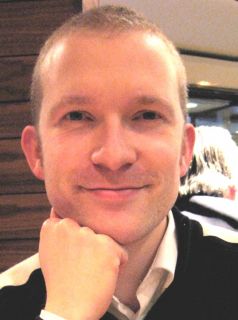 Søren R. Frimodt-Møller, Assistant Professor, Dept. of Architecture, Design and MediaTechnology, Aalborg University Esbjerg, Managing Editor of JMM: The Journal of Music and Meaning. www.orkesterfilosofi.dk; www.musicandmeaning.net Søren R. Frimodt-Møller, Assistant Professor, Dept. of Architecture, Design and MediaTechnology, Aalborg University Esbjerg, Managing Editor of JMM: The Journal of Music and Meaning. www.orkesterfilosofi.dk; www.musicandmeaning.net
How do groups coordinate their actions in a successful performance? This question is essential not only for music ensembles, but also for workplaces and organizations in general with regard to performing any group task.
In this conversational lecture, we build on our study of music performance and of performing work in firms, respectively. We consider the different mechanisms ensembles and firms use to coordinate the actions of their members. We especially focus our attention on one mechanism that appears to play an important role in both contexts, i.e., routines. In this lecture, we explore the emergence, prerequisites, role, and implications of routines from the perspectives of a music philosopher and an organization scholar.
Poster available as pdf-file here.

Thursday, September 13, 2012, 3:15-5 p.m. in U73
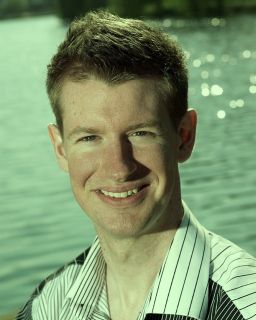 The Search for Musical Perfection When Preparing a Piece for Recording – Beyond the Musical Score The Search for Musical Perfection When Preparing a Piece for Recording – Beyond the Musical Score
Morten Heide, Pianist and Choral Director, NNIMIPA delegate-at-large representing The Academy of Music and Dramatic Arts, Southern Denmark (AMDA), Odense, Denmark. http://mortenheide.dk/home
(Expanded version of a talk originally given at NNIMIPA Network Meeting, King's College, London, July 22, 2012: http://www.nnimipa.org/PROGRAM_LONDON_2012_A5.pdf)
After several years of performing Messiaen's music, I decided to record his vast piano cycle Vingt Regards sur l’Enfant-Jésus/ Twenty Gazes upon the Infant Jesus. 2010 was the year of preparation for this recording which I completed in the early summer of 2011. During the process of preparation, recording and finally the editing of many hours of recorded material, I found myself obliged to make many choices and to engage in much serious contemplation.
My goal with this short presentation is to shed some light on the process I (we) as (a) musician(s) go through when recording a piece of music - from the very first note played (when we perhaps hadn't even thought of recording the piece later on) until the final result. It's not so much the final result that is important in this lecture, but the process, since it's a process of trying to approach perfection. And my idea of the "perfect" Messiaen recording surely differs from that of other musicians or musicologists.
As with most other composers there's not just one "true" way of playing Messiaen's music, but several ways. What then makes a recording "perfect" and might not this aim for perfection when recording Messiaen's music differ from when recording say music of Bach or Mozart? What is perfection in the context of recording ?To what degree is one as a musician obliged to stay true to the musical score and to what extent is one allowed certain freedoms? Does performance practice (tradition) apply to contemporary music like that of Messiaen? When editing, what makes one "take" better than another if both contain all the right notes?
Those were but some of the many questions and considerations that consciously and unconsciously went through my mind during these three steps (preparing, recording and editing) of completing the recording. A lot of this is very difficult to put into words since, as always with music, it's to a great extent a matter of feelings, sense and emotions, of culture and traditions/schools, etc. In other words please don't expect this presentation to provide any final answers regarding the search for perfection in recording, but rather to work towards providing an articulation of some of the relevant questions which should be asked.
Poster for the seminar available here.

Thursday, September 20, 2012, 3:15-5 p.m. in U73
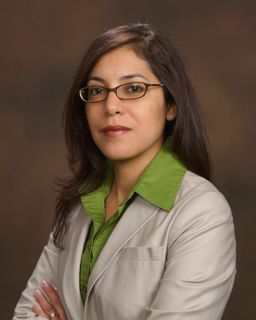 Music as Communitas: Ecstasy and Dogma in the Performance Aesthetics of Franz Liszt and Clara Schumann Music as Communitas: Ecstasy and Dogma in the Performance Aesthetics of Franz Liszt and Clara Schumann
Ludim R. Pedroza, PhD, Assistant Professor of Music, Texas State University School of Music. http://latin.music.txstate.edu/faculty-and-staff/Ludim_Pedroza.html
(Via Skype)
Franz Liszt and Clara Schumann have each been historicized as representatives of performative dichotomies: Liszt as the uninhibited virtuoso who drove audiences into wild ecstasy, Schumann as the “priestess” who upheld the dogma of the Werktreue and delivered the “pure” musical work in the most sober manner. Nevertheless, closer inspection into the writings and performative lives of each challenges their stereotypical personae and reveals an interesting interplay between the emotional and the conceptual, between ecstasy and dogma. Through the lens of anthropologist Victor Turner’s concept of Communitas we see these artists negotiating both experience and idealization; we encounter a Liszt who idealized musical experience as the basis for societal transformation, and we also envisage Schumann’s private, emotional relationship with music, which drove her to idealize the musical work as an autonomous entity. Ultimately my goal is not to synthesize a philosophy of performance but to offer a socio-historical framework within which we can expand the dialogue on our own performative approaches and the lingering echoes of Liszt and Schumann’s aesthetics in them.
Poster for the seminar available here

Thursday, September 27, 2012, 3:15-5 p.m. in U73
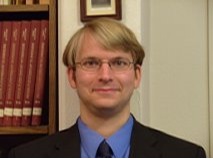
Tchaikovsky's Romeo and Juliet Fantasy Overture as an Example of How Semiotics Can Inform Hermeneutics
Daniel John Carroll, BA, Graduate Teaching Assistant, School of Music, Boston University.
(Via Skype)
The literature on the narrative potential of instrumental musical compositions (those without a written text) encompasses a wide spectrum between the extreme formalists who believe that such works do not have any semantic nature at all but are purely “tonally moving forms,” and those who posit that they can indeed be interpreted for their underlying narrative structures which convey not only a plot in musical language, but even implicit ideological endorsements. As for the ability for music to fulfill the latter condition, the two main modes of interpretation are semiotics, which generally focuses on the individual musical gestures as they can be said to be signs in a signifier-signified relationship, and hermeneutics, which generally entails the discernment of larger narrative schemes that encompass the entire composition.
While many musicologists not unjustifiably lament the inherent complexity of many semiotic systems that are applied to musical works, it seems that their consideration is very beneficial to the hermeneutic enterprise involving the entire composition. A comparatively simple way of discerning the signifying capacity of individual musical gestures is employing the principle of “mapping” in space, a method described by semioticians as the way the notation of the gesture itself conveys the impression of the object or idea it purports to signify. For this presentation, I shall discuss the Romeo and Juliet Fantasy Overture by Tchaikovsky, both in terms of its entirety and in terms of many notable specific musical gestures, with respect to how this tendency for musical-visual “mapping” contributes to a clearer and more tenable understanding of the underlying themes of internal and interpersonal conflict and resolution within the work as they are applied from Shakespeare’s play.
Poster for the seminar available here.

Thursday, October 4, 2012, 3:15-5 p.m. in U73
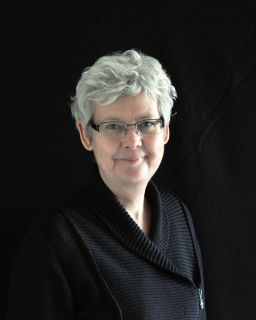 Improving Sight-Reading by Combining Ear, Eye and Instrument Improving Sight-Reading by Combining Ear, Eye and Instrument
Inge Bjarke, Lecturer in aural training at The Academy of Music and Dramatic Arts, Southern Denmark; Educated as a pianist, a piano teacher and a teacher in aural training. The author of three textbooks: Musikkens Grundbegreber (“The Fundamental Concepts of Music”) (MUFO 1991); Rytmer med Toner (“Rhythms with Tones”) (MUFO 1994); SNAPSHOT- An Introduction to Sight-Reading (MUFO 2009, English version 2011)
Sight-reading is an important part of professional musicianship, and to be able to imagine the sound in advance of playing is a necessity for good phrasing and intonation. The connection between sign and sound is trained in sight-singing as a part of aural skills, but to many students, this may be quite difficult, and not corresponding to their instrumental level. It seems as if there is a missing link in the way we learn music - compared to text reading, where the sign immediately gives an impression of the sound.
Learning the language of music mostly happens through playing an instrument, with quite much focus on the technical mastering of the instrument. In this process, the written notes might be seen merely as a sign of where to put the fingers on the instrument, rather than being perceived as symbols of sounds.
This one-way access to the music is not adequate for a professional musician, and to achieve an all-round mastering of the musical language, you have to work equally with reading, listening, playing and singing.
To help the student to develop all these skills, I have written the textbook SNAPSHOT – An Introduction to Sight-Reading, which consists of a large number of short exercises and examples from classical, tonal music.
My presentation will contain also a demonstration of how to work with exercises from SNAPSHOT, and musicians among the participants are invited to bring their instruments.
Poster for the seminar available here.

Thursday, October 11, 2012, 3:15-5 p.m. in U73
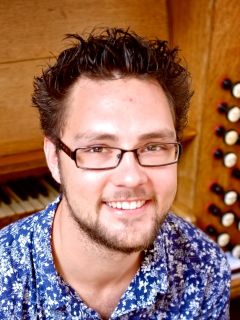
Elucidating the Significance of Statistical Learning in Music Cognition through Behavioural Experiments and Computational Modelling
Niels Chr. Hansen;Center of Functionally Integrative Neuroscience, Aarhus University Hospital; Centre for Digital Music, Queen Mary, University of London, United Kingdom;Royal Academy of Music Aarhus.
This presentation provides a general introduction to an on-going, EPSRC-funded research project on the Information Dynamics of Music (www.IDyOM.org). Since the launch of this interdisciplinary project in 2005, researchers at Queen Mary and Goldsmiths Colleges (University of London) have applied a wide range of methods spanning from behavioural experiments, computational modelling, musicological analysis and advanced neuroimaging to explore the relation between dynamic changes in the information-theoretic structure of music with cognitive and neural processes in the listener. The initial part of my talk will focus on the rationale behind the IDyOM project, briefly present the computational procedures which are typically used to model listener responses, and discuss some of the key findings thus far.
In the second part of the talk, I will delve more thoroughly into a recent IDyOM experiment which tested the cognitive validity of the information-theoretic concept of Shannon entropy as a model of predictive uncertainty in auditory cognition. This work was motivated by the proposal that schematic expectations arise from automatically internalised probabilities in our sensory input.
More specifically, 24 melodic contexts were selected from two repertoires differing in rhythmic and tonal complexity (i.e. complex Schubert songs and simple isochronous hymns). The contexts were assigned to low- and high-entropy categories according to predictions of an unsupervised, variable-order Markov model. Musicians and non-musicians listened to the stimuli and provided explicit judgements of perceived uncertainty (explicit uncertainty) and an implicit measure computed as the entropy of expectedness ratings obtained using a classical probe-tone paradigm (implicit uncertainty).
The findings from this experiment support the notion that domain-relevant training leads to an increasingly accurate cognitive model of probabilistic structure. Furthermore, the efficacy of entropy as a model of predictive uncertainty is enhanced by: (a) simplicity in sensory input, (b) domain-relevant training, and (c) implicitness of uncertainty assessment. It is argued that these factors facilitate the generation of more accurate perceptual expectations.
Poster for the seminar available here.

Thursday, November 1, 2012, 4:15-6 p.m. in U73. PLEASE NOTE THAT THE TIME OF THE SEMINAR HAS BEEN CHANGED TO 4:15 p.m. SO AS NOT TO COLLIDE WITH THE ANNUAL HANS CHRISTIAN ACADEMY LECTURE AT SDU AT 3:00 p.m.
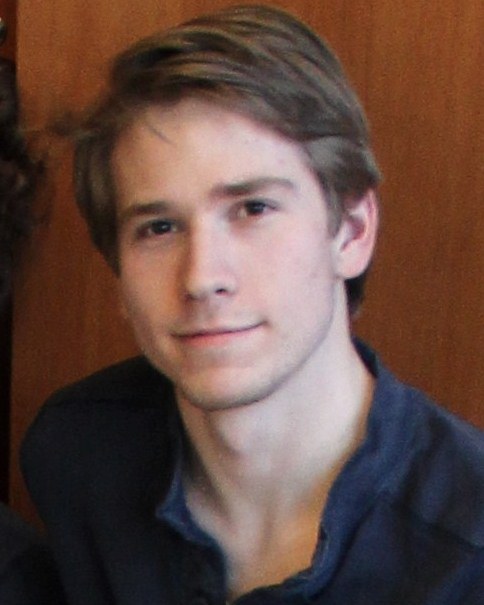
Composition as Inquiry
Matias Vestergård Hansen; currently studying piano with Amalie Malling at the Royal Danish Conservatory of Music.
For me, composing music has always been a byproduct of all my musical endeavors; and do I mean composition in the literal sense, that is, the joining together of disparate musical elements. Apart from film media, music is the only art form that evolves temporally, and is capable of doing so on many planes at once. This we call counterpoint, something that deeply interests me.
I have always been fascinated with the idea of the inherent possibilities of any given musical subject. Some subjects are constructed in such a way so as to be able to withstand the enormous strain of a very sophisticated compositional order; witness, for example Johann Sebastian Bach’s die Kunst der Fuge, eighteen canons and fugues all constructed from a deceptively simple theme in d-minor. In my seminar, I will expound on my way of working around a compositional process that is clearly indebted to Bach’s contrapuntal art. I will do this by drawing examples from the first movement of my Piano Quartet in D major, a work that has been long in the making. I will also share examples from the four earlier revisions to which I have subjected my work, explaining the thoughts that go behind the alterations, and demonstrating my passion for exploring what naturally arises from any given juxtaposition of a select group of musical elements and motifs; this, to me, constitutes an inquiry into the nature of the musical material at hand.
Poster for the seminar available here.

Thursday, November 8, 2012, 3:15 -5 p.m. in U73
(Note: A. RUTHMANN RESCHEDULED - WATCH FOR NEW DATE! On November 8, Oded Ben-Horin gives us a "preview of coming attractions" for his talk on November 29.)
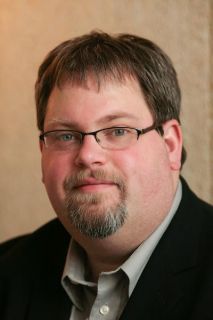
Aesthetics and Pedagogies for Making Music with New Media
S. Alex Ruthmann, PhD, Assistant Professor of Music Education, Department of Music; Faculty Fellow in Residence, Commonwealth Honors Program, Universityof Massachusetts Lowell; President, Association for Technology in Music Instruction; Co-Editor, International Journal of Education & the Arts.
www.alexruthmann.com/
performamatics.org/
atmionline.org/
www.ijea.org/
(Via Skype)
This presentation will share contemporary exemplars of new tools and musical practices for making music with new media. Online communities of youth practice are also emerging alongside, and embedded within, these new tools and platforms. More and more, children are learning from and teaching each other mediated by online fora and shared media exemplars. In the process, children are building shared understanding and distributed expertise often in semi-private environments not accessible to their teachers. Given that children increasingly have access to these musical tools (e.g., Noteflight.com, MIT's Scratch, GarageBand, inbflat.net, BohemianRhapsichord.com, etc.) and are actively using them to create music with new media, how should school- and community-based music educators respond to these innovations? How can school music educators make space for and facilitate these new forms of musicianship in their classrooms? In many cases, these new tools and practices raise pedagogical and technological issues that challenge notions of musical aesthetics and practices held dear by formally trained educators and musicians. Processes and practices which used to be only accessible to the most expert practitioners after years of practice now seem to be available to any child at the flick of a finger. These issues, and others, will be raised and problematized.
Poster for the seminar available here.

Thursday, November 15, 2012, 3:15-5 p.m. in U73
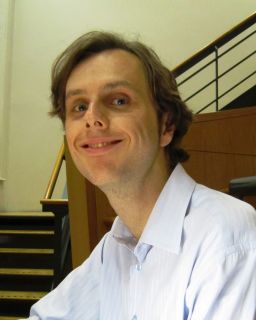
Music and Epistemology: The Case of Friedrich Schlegel
Tomas McAuley, PhD Candidate, Department of Music, King's College London. www.kcl.ac.uk/artshums/depts/music/people/students/mcauley/index.aspx (Via Skype.)
In a 1798 fragment from the journal Athenaeum, Friedrich Schlegel asks that his reader ‘consider a certain tendency of pure instrumental music (reine Instrumentalmusik) toward philosophy as something not impossible in itself.’ In a notebook entry from around the same time, Schlegel is much more forthright: ‘All pure music must be philosophical and instrumental (music for thought).’ These suggestions, tentative in public, forthright in private, are amongst the very first statements of a new view of music that arose in German-speaking countries in the years around 1800. The core of this new view was the belief that instrumental music is able to provide insight into central philosophical questions such as the nature of subjectivity or of the ultimate ground of being. According to a still standard presumption, this view arose in response to developments in contemporary composition. In this talk, however, I show that, in the case of Schlegel at least, the birth of this new view was driven not by any particular music, but by philosophical speculation regarding the nature of knowledge.
Audience participation via Skype is also welcome.
Poster for the seminar available here.

Thursday, November 22, 2012, 3:15-5 p.m. in U73
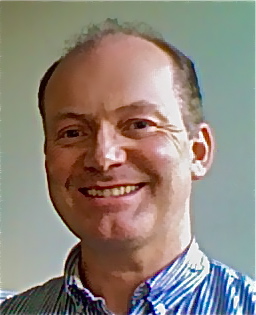
Wittgenstein and Music Performance as Aesthetic Practice.
Tom Eide Osa, Associate professor University of Bergen, The Grieg Academy.
www.uib.no/rs/grieg/artikler/2012/01/tom-eide-osa
(Via Skype.)
Wittgenstein emphasizes that familiarity with a concept is to apply it correctly in action, knowledge is found in the correct use of the concept. Learning a concept is to obtain proper use within established conventions, to master the practice that is the concept’s grammar. To describe a concept is to clarify the usage rules in the current context.
In music performance different sets of ways of playing constitute communities of practice. Being able to play in specific ways in a specific musical context shows that the player has knowledge in his playing. He is conversant with the current aesthetic practice and demonstrates knowledge of and sensitivity to the rules that apply. He is able to apply performance practice conventions to repertoire, such as a specific style in American jazz, Western art music or Norwegian folk music.
I understand ways of playing and sets of such as concepts and areas of knowledge. Knowing and practicing ways of playing as concepts are the knowledge in the communities of practice. Music performance cultures can be identified as representatives of historically and geographically localized styles and genres, characterized and constituted by their distinctive ways of playing.
Music performance per se can, due to its primary identity as art, to a limited extent be scientifically articulated by words and numbers, or by sheet music. In musical performance there can still be talk of concepts and knowledge, which when in practice are articulated nonverbally as sounding music. Such knowledge is to use ways of playing (concepts) correctly in the music performance.
A subject didactic approach to the concept of aesthetic practice, offering viewpoints on concept formation, appreciation, judgement and communication in art worlds, will contribute to the understanding of learning and knowledge in music performance.
Poster for the seminar available here.

Thursday, November 29, 2012, 3:15-5 p.m. in U73
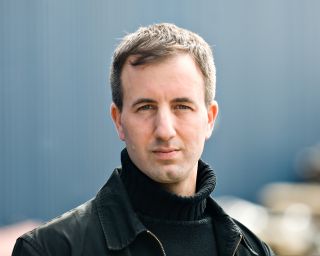
Write a Science Opera
Oded Ben-Horin, Associate Professor, Stord Haugesund University College, Norway Faculty of Learning and Culture (Music Dept.)
www.thesciencefair.net
(Via Skype.)
Write a Science Opera (WASO) is a newly-developed approach to multi-disciplinary and creative science education which brings together the opera genre and the traditional science class. WASO is based on the widespread and well-documented pedagogical methodology Write an Opera which is led in Europe by the Royal Opera House (London): a professional development methodology enabling teachers to instruct pupils of all ages during the creation and performance of completely self-written operas. WASO integrates science education into the original methodology by involving scientists as mentors, providing real-world complex scientific challenges on which students will collaborate creatively, creating a need to learn. Scientific information is personally introduced to pupils as inspiration for WASO productions by a scientist whose function is to lead and inspire an inquiry-based scientific as well as artistic process, thus demonstrating the common impulses shared by science and the arts.
Poster for the seminar available here.

Thursday, December 6, 2012, 3:15-5 p.m. in U73 NOTE: M. BODE RESCHEDULED - WATCH FOR NEW DATE DURING THE SPRING!
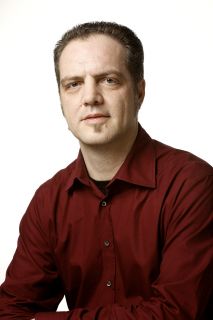
On the Meanings of the Sounds of Commerce
Matthias Bode, Associate Professor, Department of Marketing & Management, University of Southern Denmark
www.sdu.dk/ansat/mat.aspx
Commerce always has had a certain sound, a certain song to play. The historical relationships are much more intertwined than the more common antagonistic myths try to argue. Recent socio-cultural and economic changes led to a new phase in this configuration. Market phenomena such as brands have become cultural resources, while a cultural system such as the production and consumption of music became immersed explicitly into branding. Based on this background, this presentation will highlight the changed socio-historical context of the sounds of commerce and give an overview of the embedded practices of “acoustic branding” from a
socio-semiotic perspective.
Audience participation via Skype is also welcome.
Poster for the seminar available here.

Thursday, December 13, 2012, 3:15-5 p.m. in U73 NOTE: A.H. JESPERSEN RESCHEDULED - WATCH FOR NEW DATE DURING THE SPRING!
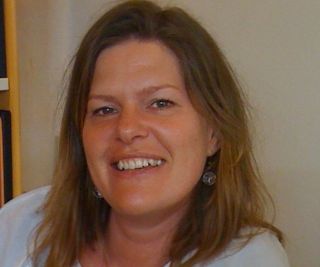
‘Rhythmical Building Blocks’: Creating Creativity
Anne Helle Jespersen, Research Librarian in Music, Head of Music Section; Library of the University of Southern Denmark. MA in Ethnomusicology and Cultural Communication.
In 2011, Anne Helle Jespersen produced the set of teaching materials, Rhythmical Building Blocks – from J.S. Bach to James Brown together with co-author Marc Bernstein, saxophonist, composer and educator. The book includes a CD and it is aimed at music teaching in primary schools. It presents principles and tools, however, that can be used in a variety of music teaching situations and institutions.
In this seminar, Anne will present and discuss aspects of this project:
a) the main purpose of the book which is to stimulate children and young people through rhythmical music to be creative, artistic and intuitive
b) her role as a communicator and “cultural translator” of the work and teaching of an artist
c) the collaboration between artists, higher schools of music in Denmark i.e. music conservatories, and the public school system.
Rytmiske Byggesten. Fra J.S.Bach til James Brown
Book incl. cd (80 pages, 22 tracks)
ISBN: 978-87-7612-681-0
Poster for the seminar available here.

Please see the following networks for additional information about activities within The Aesthetics of Music and Sound:
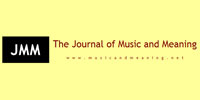
JMM: The Journal of Music and Meaning (Funded by the Danish Research Council for the Humanities.)
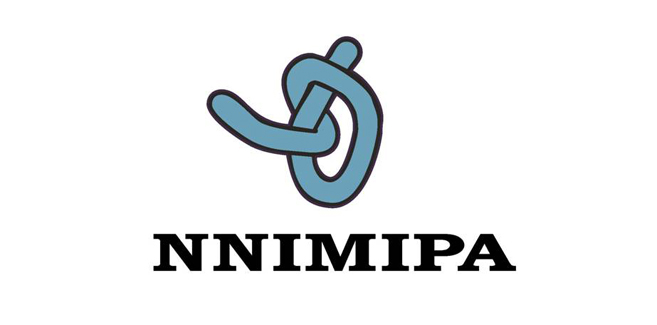
Nordic Network for the Integration of Music Informatics, Performance and Aesthetics (originally supported by NORDPLUS and subsequently by NORDFORSK)

netværk for tværvidenskabelige studier af musik og betydning/
network for cross-disciplinary studies of music and meaning

|
|
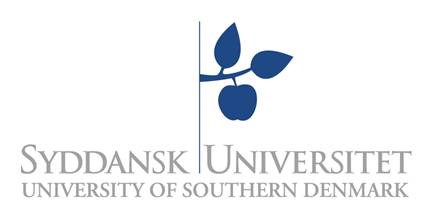

Department for the
Study of Culture
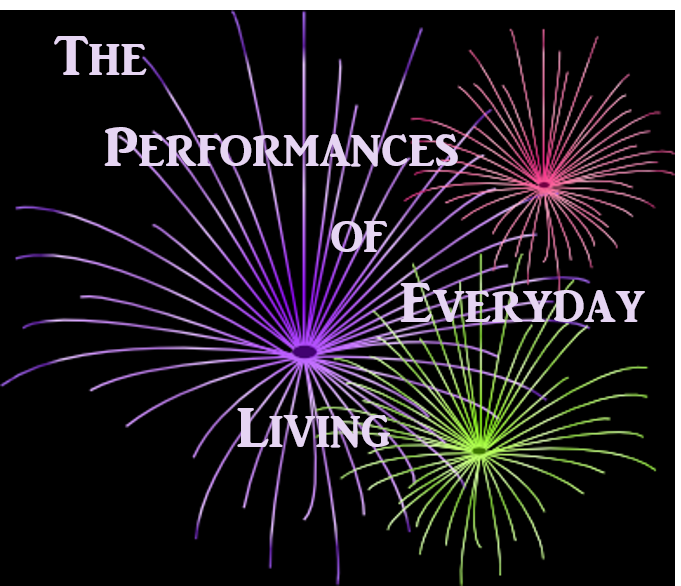
Research Director for
The Performances of
Everyday Living
Coordinator for
The Aesthetics of
Music and Sound
and
Editor and Webmaster for
www.soundmusicresearch.org:
Cynthia M. Grund
cmgrund@sdu.dk


Updates

PLEASE NOTE: During the month of March 2015 and possibly extending into April/May 2015, heavy construction will be taking place on this website behind the scenes as it "migrates" to new editing software. Please be patient with us during this period if occasionally some pages take on a strange appearance, or if updating seems to be a bit erratic. All efforts will be made to maintain the integrity of the page with the schedule for the seminar series Topics in the Aesthetics of Music and Sound: Mostly Metal here, but it will nevertheless be a good idea also to keep an eye on our Facebook group here and the regularly occurring announcements of events on it during this period. Thank you for your patience!
During March-May 2015 we will also continue to develop our new

channel, which we encourage you to visit here.
Archive
for ""Updates" and "News":
Click HERE.

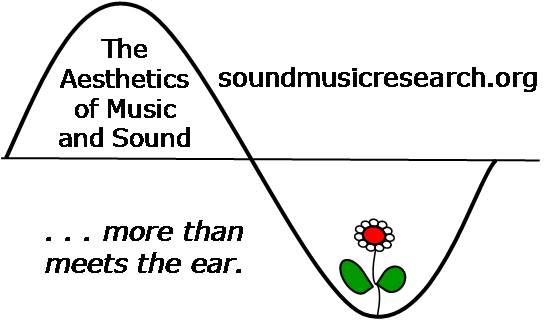
| |